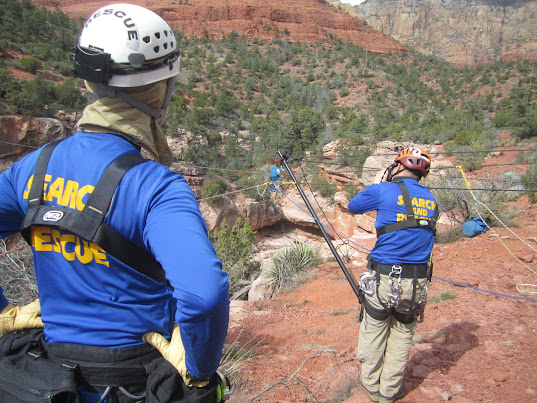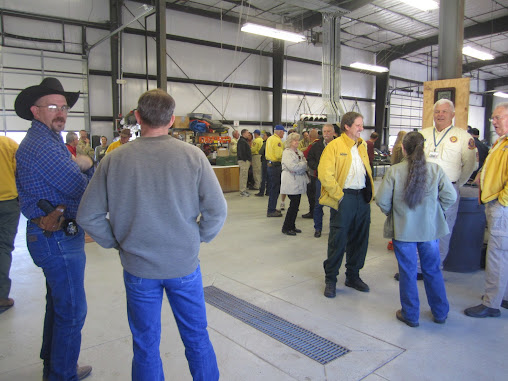I haven't posted in awhile, but that's not for lack of SAR activity. Although it's been slower than last year at this time when it comes to call-outs, there have been missions lately. It's just that, unfortunately for a writer-type like me, there have been a couple of recent missions I've participated in that I'm not able to write about due to their ongoing and, you might say, legally sensitive nature.
But... I can tell you about a few other missions, none of which I've been able to respond to myself. Two of those calls happened Wednesday, as I sat here with a nasty head cold and sore throat. Woe is me. So, my teammates filled me in...
A Bitter Cold Search on the North Rim
This search occurred a few days before Christmas. The call-out, which came at 3 a.m., was about a track hoe driver who didn't return from moving his machine from one area to another near the North Rim of Grand Canyon.
Searchers towed the team's snowcat and four snowmobiles a few hours from Flagstaff to Jacob Lake and then another 20 miles toward the Grand Canyon on Highway 67. They stopped at a side road the missing subject was reportedly on and sent in the 'cat, with the snowmobiles on standby. In about a mile, the 'cat found the track hoe with the driver inside, cold but otherwise in good shape. He had gotten low on fuel and stopped after midnight.
SAR volunteers were then told two of the subject's fellow employees had taken a Jeep to go look for him, so when the DPS helicopter arrived on scene, our coordinator directed the aircraft to look for their vehicle. The crew spotted the unoccupied vehicle and one subject a few miles away, walking toward the track hoe, so SAR volunteers in the snowcat went back in and picked him up. Turns out, he was the only one in the Jeep.
It was bitterly cold out there, below zero with the wind chill, so searchers were glad to wrap things up.
A Joint Search for a Missing Hiker in Yavapai County
At 6 a.m. on the morning of Wednesday, December 28th, our technical/mountain rescue team was called to assist the Yavapai County team with a search for an overdue 21-year-old hiker, last seen on Tuesday at around noon in steep, rugged terrain near the Village of Oak Creek.
That hiker was Mahdi Harrizi, visiting the area with his family from New York. Mahdi's mother called for help at about 4 p.m. on Tuesday, after her son called her from his cellphone, saying he was stranded on a ledge near Castle Rock.
According to reports, Mahdi had taken a trail from
behind the resort where they were staying. At the time his mother made the call for help, she had been able to see him up at the top of the mountain.
Searchers from Yavapai County arrived on scene soon after, just as the sun was setting, but Sheriff's deputies were unable to get a GPS coordinate on Mahdi's cell
phone because of the remote location. Ground searchers and a Department of Public Safety helicopter crew looked for Mahdi throughout the night and then called Coconino County SAR for assistance.
From what I heard, just after the DPS helicopter dropped off more technical rescue SAR members at the top of the mountain at about 11:15 a.m. on Wednesday and were flying off, the crew spotted Mahdi's body
between a sheer cliff and some shrubs. Sheriff’s
officials stated that Harrizi apparently fell about 150 feet, and
he may have fallen shortly after his conversation with his mother.
Here's a photo from one of my teammates who was at the top of the mountain....
From One Mission to Another
At 4 p.m. on the 28th, we received another call-out. This was another mission down in Sedona for a stranded climber. Additional technical rescue team members as well as general SAR were asked to respond, to assist the other tech team members already en route from the day's first mission to the next.
I don't yet have any details about what happened, but I'll fill in you once I do.
And now that I'm just about over this creeping crud I've had for several days, I've got my SAR gear ready to respond if... well, when we get another call.










































